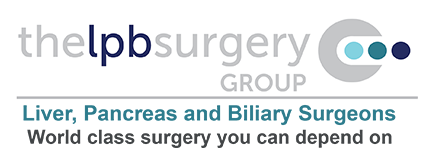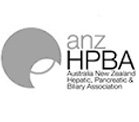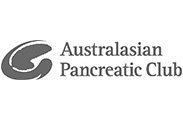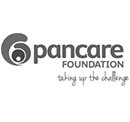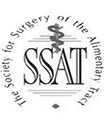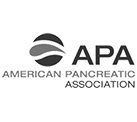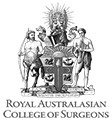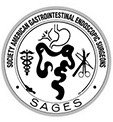Gallbladder Surgery
Laparoscopic Cholecystectomy (Keyhole Gallbladder surgery)
The field of gallbladder surgery in recent times is rapidly changing. Keyhole surgery is now the standard method for removing the gallbladder when indicated. There are however new techniques for surgically removing the gallbladder in the form of Single Incision Surgery, needlescopic surgery and natural orifice translumenal surgery (NOTES). Dr Nikfarjam and Dr Yoshino are experienced in advanced minimally invasive laparoscopic techniques and robotic surgery. Dr Nikfarjam also perform advanced endoscopic surgery, such as ERCP, which is sometimes required for treating stones or blockages detected in the bile ducts.
Below is some general information regarding laparoscopic (Keyhole) surgery. To determine what type of surgery is right for you please consult your surgeon.
What is it?
Laparoscopic Cholecystectomy, or removal of the gallbladder using multiple small incisions and a camera rather than a large incision, is generally performed for symptomatic gallstones (cholelithiasis) or gallbladder infection (cholecystitis).
What are the symptoms?
Symptomatic cholelithiasis occurs when stones form in the gallbladder, an organ under the liver that stores bile. The stones can intermittently block the duct from the gallbladder which causes pain with eating in the upper right side of the abdomen. The pain occurs most often after eating meals high in fat. Patients may also have nausea or vomiting. If the stone completely blocks the opening of the gallbladder, bacteria can become trapped in the gallbladder causing inflammation or cholecystitis. With cholecystitis, patients often have fever in addition to pain and nausea. If the gallstone blocks the common bile duct, jaundice (a yellowing of the skin) can occur.
What causes it?
Gallstones form when cholesterol and other things found in bile make stones. They can also form if the gallbladder does not empty as it should. People who are overweight or who are trying to lose weight quickly are more likely to get gallstones.
How is it diagnosed?
A complete history and physical exam is performed, as well as blood work and an ultrasound. The ultrasound will show if stones are present in the gallbladder as well as any thickening of the wall of the gallbladder, indicating the presence of infection.
Treatment Options
Patients with symptomatic gallstones can try decreasing the amount of fat in their diet to control the symptoms. Often, they need to have their gallbladder removed. Most cholecystectomies, or removal of the gallbladder, are performed using four small incisions. The largest incision is at the belly button, with three additional incisions in the right upper part of the belly. In some cases a single incision operation through the umbilicus, or surgery using mini-instruments (needlescopic) may be appropriate to reduce scarring and possibly allow faster recovery. A camera and special instruments are used to remove the gallbladder from under the liver. The gallbladder is then completely removed from the abdomen. Patients usually have no residual symptoms once they recover from cholecystectomy. Occasionally patients will have some residual nausea or diarrhoea, which usually will resolve within a month or so.
How are these problems found and treated?
Ultrasound is most commonly used to find gallstones.
- In a few more complex cases, other X-ray tests may be used to evaluate gallbladder disease.
- Gallstones do not go away on their own. Some can be temporarily managed with drugs or by making dietary adjustments, such as reducing fat intake. This treatment has a low, short-term success rate. Symptoms will eventually continue unless the gallbladder is removed.
- Surgical removal of the gallbladder is the time honoured and safest treatment of gallbladder disease.
What are the advantages of performing the procedure Laparoscopically?
- Rather than a 15 to 20 cm incision, the standard operation requires only three or four small openings in the abdomen.
- Patients usually have minimal post-operative pain.
- Patients usually experience faster recovery than open gallbladder surgery patients.
- Most patients go home within one day and enjoy a quicker return to normal activities.
- In some cases a single incision operation through the umbilicus, or surgery using mini-instruments (needlescopic) may be appropriate to reduce scarring and possibly allow faster recovery.
Are you a candidate for Laparoscopic Gallbladder removal?
Although there are many advantages to laparoscopy, the procedure may not be appropriate for some patients. Also you may want to explore the possibility of newer minimally invasive techniques with your surgeon. A thorough medical evaluation by your personal physician, in consultation with a surgeon trained in laparoscopy, can determine if laparoscopic gallbladder removal is an appropriate procedure for you. There are also more serious conditions that can affect the gallbladder and bile ducts such as cancer. In many of such cases when an operation is indicated, more radical open surgery is required. Dr Nikfarjam is an advanced minimally invasive surgeon and a surgical oncologist (surgeon trained in cancer surgery) and is able to offer appropriate assessment and treatment for all surgical diseases involving the gallbladder, bile ducts and liver.
What preparation is required?
The following includes typical events that may occur prior to laparoscopic surgery; however, since each patient and surgeon is unique, what will actually occur may be different:
- Preoperative preparation includes blood work, medical evaluation, chest x-ray and an ECG (heart tracing) depending on your age and medical condition.
- After your surgeon reviews with you the potential risks and benefits of the operation, you will need to provide written consent for surgery.
- Your surgeon may request that you completely empty your colon and cleanse your intestines prior to surgery. You may be requested to drink clear liquids, only, for one or several days prior to surgery.
- It is recommended that you shower the night before or morning of the operation. Your abdomen should not be shaved before to surgery as this will increase the risk of infection.
- After midnight the night before the operation, you should not eat or drink anything except medications that your surgeon has told you are permissible to take with a sip of water the morning of surgery.
- Drugs such as aspirin, blood thinners, anti-inflammatory medications (arthritis medications) and Vitamin E will need to be stopped temporarily for several days to a week prior to surgery in some cases. In certain cases your surgeon may decide in consultation with your physician that the risk of stopping such medications is greater than the risk of bleeding at operation and may elect not stop these medications.
- Diet medication or St. John's Wort should not be used for the two weeks prior to surgery.
- Quit smoking and arrange for any help you may need at home.
How is Laparoscopic Gallbladder removal performed?
- Under general anaesthesia, so the patient is asleep throughout the procedure.
- Using a cannula (a narrow tube-like instrument), the surgeon enters the abdomen in the area of the belly-button.
- A laparoscope (a tiny telescope) connected to a special camera is inserted through the cannula, giving the surgeon a magnified view of the patient's internal organs on a television screen.
- Other cannulas are inserted in standard operations which allow your surgeon to delicately separate the gallbladder from its attachments and then remove it through one of the openings.
- Many surgeons perform an X-ray, called a cholangiogram, to identify stones, which may be located in the bile channels, or to insure that structures have been identified.
- If the surgeon finds one or more stones in the common bile duct, he may remove them with a special scope, may choose to have them removed later through a second minimally invasive procedure, or may convert to an open operation in order to remove all the stones during the operation. Sometimes a procedure called an ERCP is performed to remove bile duct stones. Most of the time this performed by a gastroenterologist, but Dr Nikfarjam also specializes in ERCP and performs several hundred of such cases per year.
- After the surgeon removes the gallbladder, the small incisions are closed with a stitch or two or with surgical tape.
What happens if the operation cannot be performed or completed by the Laparoscopic method?
In a small number of patients the laparoscopic method cannot be performed. Factors that may increase the possibility of choosing or converting to the "open" procedure may include obesity, a history of prior abdominal surgery causing dense scar tissue, inability to visualise organs or bleeding problems during the operation. The decision to perform the open procedure is a judgment decision made by your surgeon either before or during the actual operation. When the surgeon feels that it is safest to convert the laparoscopic procedure to an open one, this is not a complication, but rather sound surgical judgment. The decision to convert to an open procedure is strictly based on patient safety.
What should I expect after Gallbladder Surgery?
- Gallbladder removal is a major abdominal operation and a certain amount of postoperative pain occurs. Nausea and vomiting are not uncommon.
- Once liquids or a diet is tolerated, patients leave the hospital the same day or day following the laparoscopic gallbladder surgery.
- Activity is dependent on how the patient feels. Walking is encouraged. Patients can remove the dressings and shower the day after the operation.
- Patients will probably be able to return to normal activities within a week's time, including driving, walking up stairs, light lifting and working.
- In general, recovery should be progressive, once the patient is at home.
- The onset of fever, yellow skin or eyes, worsening abdominal pain, distension, persistent nausea or vomiting, or drainage from the incision are indications that a complication may have occurred. Your surgeon should be contacted in these instances.
- Most patients who have a laparoscopic gallbladder removal go home from the hospital the day after surgery. Some may even go home the same day the operation is performed.
- Most patients can return to work within seven days following the laparoscopic procedure depending on the nature of your job. Patients with administrative or desk jobs usually return in a few days while those involved in manual labor or heavy lifting may require a bit more time. Patients undergoing the open procedure usually resume normal activities in four to six weeks.
- Make an appointment with your surgeon within 2 weeks following your operation.
What Complications can occur?
While there are risks associated with any kind of operation, the vast majority of laparoscopic gallbladder patients experiences few or no complications and quickly return to normal activities. It is important to remember that before undergoing any type of surgery--whether laparoscopic or open you should ask your surgeon about his/her training and experience.
Complications of laparoscopic cholecystectomy are infrequent, but include bleeding, infection, pneumonia, blood clots, or heart problems. Unintended injury to adjacent structures such as the common bile duct or small bowel may occur and may require another surgical procedure to repair it. Bile leakage into the abdomen from the tubular channels leading from the liver to the intestine may rarely occur.
Numerous medical studies show that the complication rate for laparoscopic gallbladder surgery is comparable to the complication rate for open gallbladder surgery when performed by a properly trained surgeon.
When to call your Doctor
Be sure to call your physician or surgeon if you develop any of the following:
- Persistent fever over (38 C)
- Bleeding
- Increasing abdominal swelling more than mild swelling common after surgery
- Pain that is not relieved by your medications
- Persistent nausea or vomiting
- Persistent cough or shortness of breath
- Purulent drainage (pus) from any incision
- Redness surrounding any of your incisions that is worsening or getting bigger
- You are unable to eat or drink liquids
Click here to know more about Gallbladder Surgery
Click here to know more about ERCP
